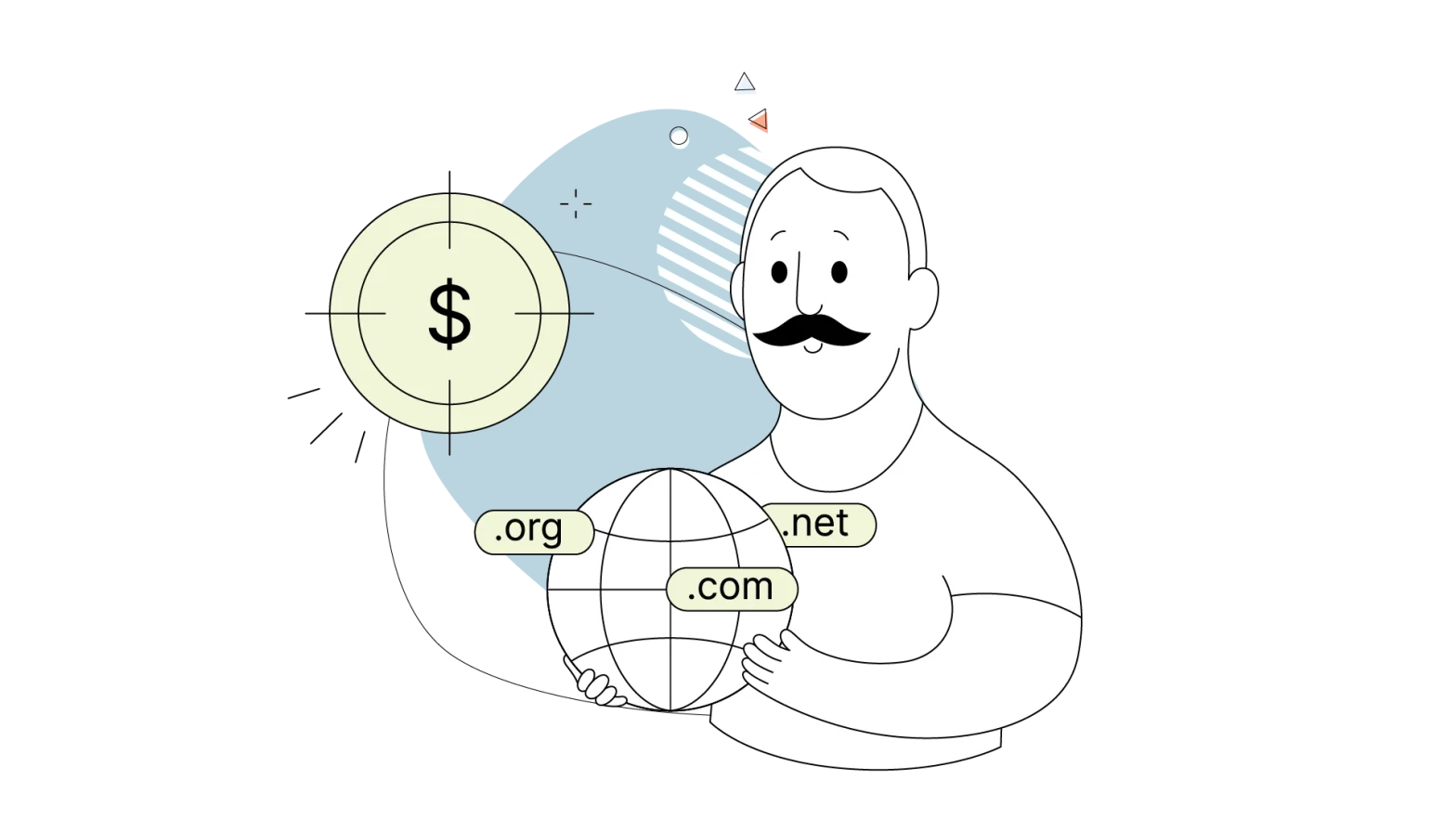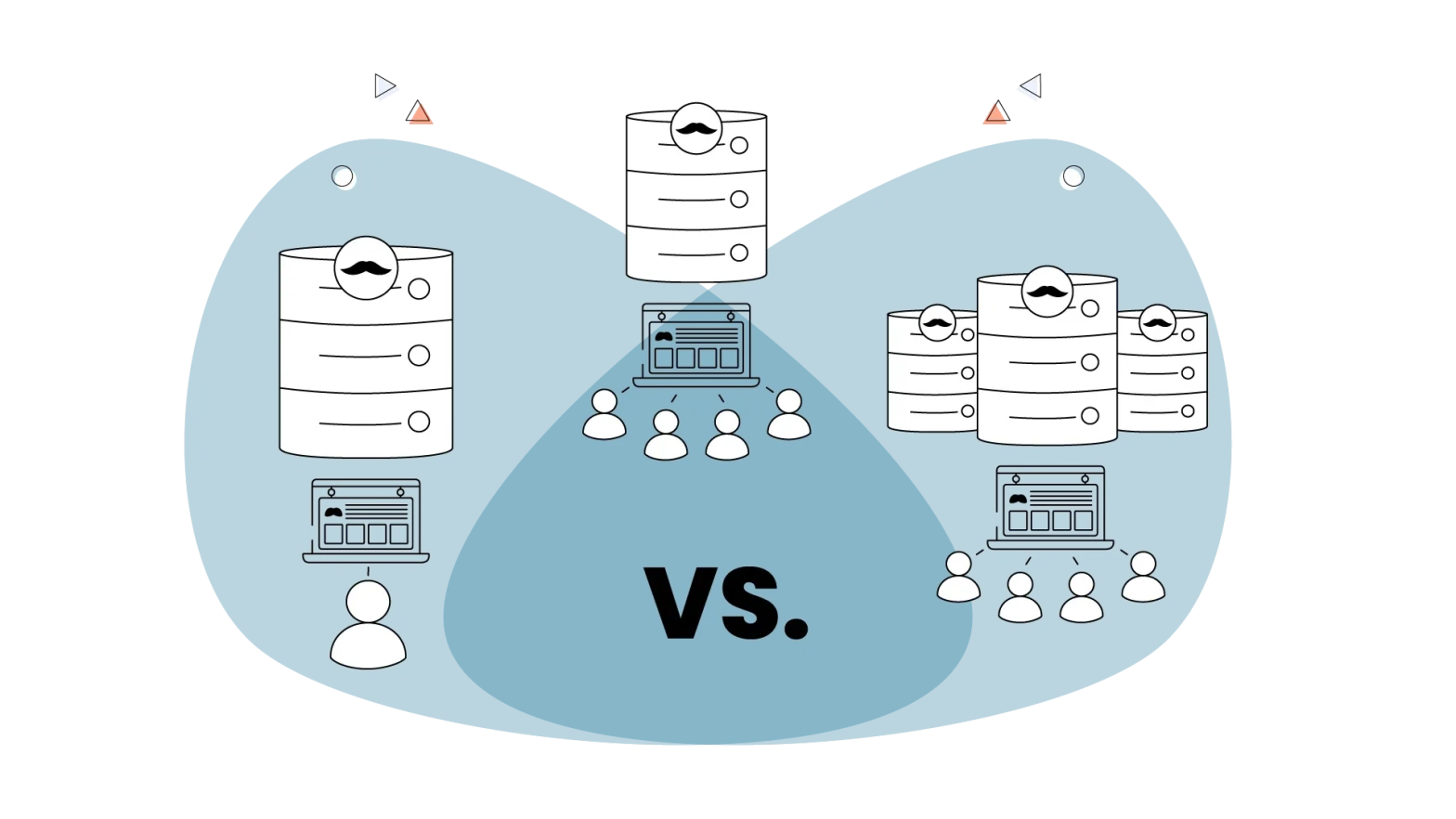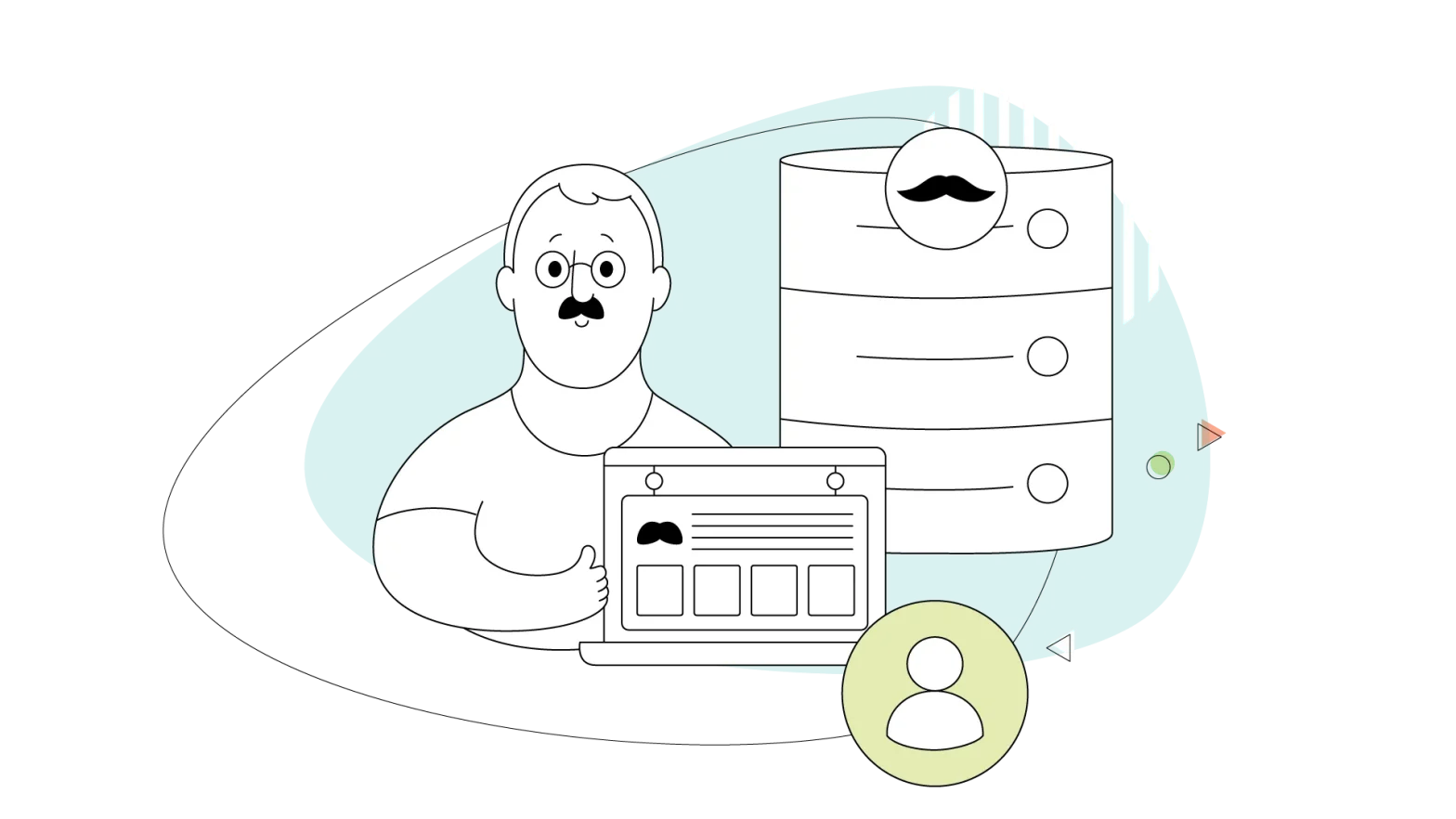You’ve got a brilliant idea for a website, a digital empire waiting to be built. The logo is designed, at least in your head or using a professional online logo creator, the content strategy is taking shape, and you’re already picturing yourself as the next internet success story.
But first, you need a name—a digital address where your future fans can find you. So, how much does that little piece of internet real estate cost? Beyond the initial domain registration fee, there are various hidden costs, such as renewal fees, domain privacy protection services, and administrative charges associated with managing the domain. Is it pocket change, or will it require a… second mortgage?
Here’s the truth: Asking how much a domain name costs is like asking how much a car costs. The answer? It depends on whether you’re shopping for a reliable car or a flashy one. Domain prices can range from a few bucks to millions (yes, seriously—CarInsurance.com sold for $49.7 million in 2010, making it the priciest digital address in history).
This highlights the significance of domains today, and in this blog, we’ll delve deep into this intriguing subject.
- The Basics: What Influences Domain Name Costs?
- Breaking Down the Costs: Actual Price Ranges
- Finding Deals & Avoiding Scams
- Choosing the Right Domain Name: Beyond the Price Tag
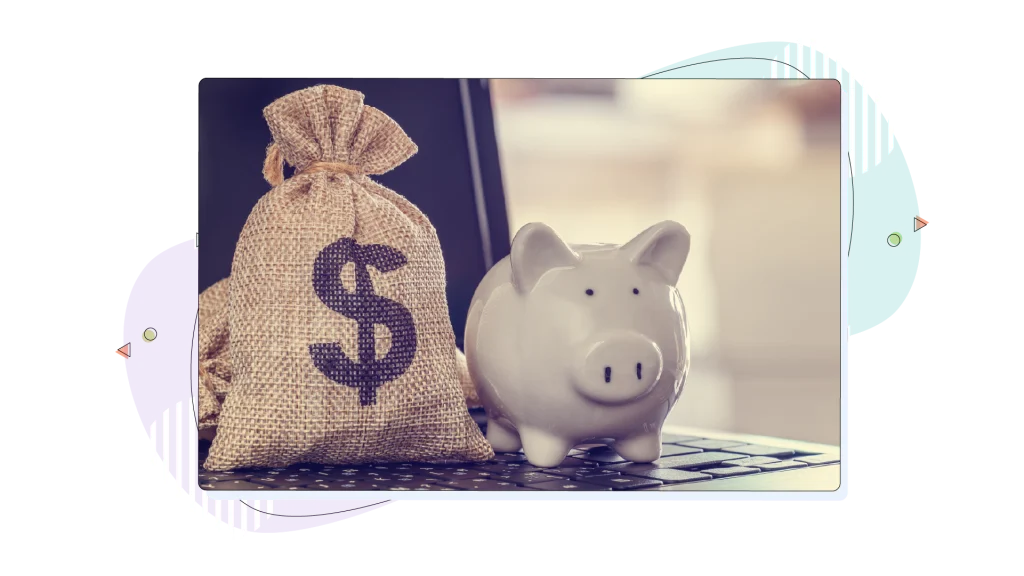
The Basics: What Influences Domain Name Costs?
1. Top-Level Domains (TLDs): Not All Extensions Are Created Equal
Remember the digital equivalent of the zip codes we mentioned? Those are technically called Top-Level Domains (TLDs)—the “.com,” “.net,” or “.org” that appear at the end of a web address.
TLDs include various categories, such as generic TLDs and sponsored TLDs (sTLDs), which are associated with private organizations and require specific eligibility criteria.
You can read more about the most popular domain names in the market, so read our article and get equipped with all the information you need.
The classic “.com” remains the staple of domain names—prestigious, recognized, and priced accordingly. At $10-15 per year from most registrars, it’s not exorbitant, but it’s typically costlier than alternatives like “.net” or “.org” (usually $12-14 annually).
Why the price difference? Simple economics: demand drives prices. Everyone wants a .com because it’s what most users instinctively type in. When someone tells you about “BusinessName,” your brain automatically appends “.com” without thinking.
Newer TLDs have expanded our options dramatically. Want something techy? Try “.tech” ($40-50/year) or “.ai” ($80-100/year).
Got a local business? Consider “.nyc” ($30-40/year) or “.london” ($40-50/year). These specialty TLDs cost more because they’re managed by different registries with different domain pricing structures and smaller customer bases to support their operations.
2. Domain Name Registrars: The Middlepeople of the Web
Domain registrars act as the liaison between you and ICANN, the non-profit organization that oversees the domain name system. They’re like real estate agents for digital property—they don’t own the domains, but they facilitate the transaction and take a cut.
When selecting a domain registrar, consider factors such as pricing variability, ICANN accreditation, and potential hidden fees, including transfer fees, which can significantly impact the overall cost of domain ownership.
On the other hand, domain brokers are specialists who help you acquire a domain name that may already be registered by someone else. They act as negotiators, working on your behalf to reach an agreement with the current owner of the desired domain.
Domain brokers, like Brandpa, are particularly useful when you’re interested in a premium domain name that can significantly strengthen your brand identity and online presence.
Brokers ensure a smooth transaction process, often providing expertise in assessing the domain’s value and potential return on investment.
Tip: Before registering, check both the initial AND renewal prices. That $1.99 domain might cost $29.99 next year—a detail often buried in the fine print. Plus, most web hosting companies will let you use a free domain name with select hosting plans.
3. Domain Name Length & Keywords
Today, it’s all about brevity and clever thinking!
- Length & simplicity: A good domain name is short, catchy, and commands higher prices because it’s easier to remember, type, and share. Think about it: which would you rather tell someone at a networking event, “visit cool-widgets-for-sale-online.com” or simply “widgets.com”?
- Keywords: Domains containing relevant keywords that people frequently search for (e.g., “insurance,” “hotels,” “cars”, “boutique“) can be perceived as highly valuable. The thinking is that these names might attract direct type-in traffic and potentially offer an advantage in search engine optimization (SEO).
- Premium/aftermarket domains: Many of the most desirable domain names—those that are short, contain valuable keywords, use the .com TLD, have a positive history (age) or are highly brandable—are already registered. These domains are often available for purchase on the aftermarket from their current owners, typically at prices significantly higher than standard registration fees.
4. Domain Registration Period
Domain names are not purchased outright like physical property; they are licensed or leased for specific periods. Some of these are:
- Annual basis: The standard domain registration period is one year, requiring an annual renewal fee to maintain ownership. Enabling auto-renewal can help prevent the loss of a domain once the registration period ends, as it ensures continuous ownership by automatically renewing the domain before it expires. If you don’t renew, the domain eventually expires and becomes available for others to register.
- Multi-year options: Most registrars allow you to register or renew a domain for multiple years upfront, often up to 10 years. Frequently, registrars offer discounts for longer registration terms, reducing the average domain cost per year.
Benefits of Longer Registration
- Cost savings: Locks in the current price for the duration, protecting against potential future price increases by the registrar or registry.
- Security & peace of mind: Reduces the risk of accidentally letting the domain expire due to a missed renewal notice or payment issue. Domain expiration can lead to website downtime, loss of email service, and potentially losing the domain entirely to someone else. Recovering an expired domain during the redemption period often involves substantial extra fees.
- Reduced administrative hassle: Fewer renewal deadlines to track.
- Brand protection: Shows a longer-term commitment and prevents competitors or squatters from grabbing the domain if you forget to renew annually. Additionally, enabling a “registrar lock” or “transfer lock” in your account settings prevents unauthorized transfers to other registrars. Note that ICANN rules impose a 60-day lock preventing transfers immediately after initial registration or a previous transfer.

Breaking Down the Costs: Actual Price Ranges
Now that we understand the factors influencing price, including domain name cost and a domain’s price, let’s look at some typical cost ranges for different types of domains and related services.
Keep in mind that these are general estimates, and actual prices will vary based on the specific TLD, the registrar, ongoing promotions, and whether the domain is new or premium.
1. Standard TLDs (.com, .net, .org)
- First-year registration: Often ranges from $10 to $20 per year. However, aggressive promotions can sometimes drop the first-year cost for .com or other popular extensions to under $10 or even as low as $1-$5.
- Renewal costs: This is where prices typically settle. Expect renewal fees for .com, .net, and .org to be in the $15 to $25+ range per year. Some registrars might charge even more.
2. Niche & Sponsored TLDs (.io, .ai, .app)
Many new or niche gTLDs, along with different domain extensions, have substantially higher registration and renewal costs compared to the standard .com, .net, and .org trio. Examples include:
- .io: Popular in the tech startup scene, often costing $35 to $60+ per year for registration and renewal.
- .ai: Directly relevant to artificial intelligence, typically priced at $80 to $100+ per year, sometimes even higher.
- .app: Targeted at application developers, usually around $15 to $20+ per year.
- .store /.shop /.xyz /.online: These can vary. Some, like .xyz or .online, often have extremely low introductory offers ($1-$3 for the first year) to encourage adoption, but renewals can jump quite a bit higher ($15-$35+). Others, like .store, might have moderate initial costs but higher renewals.
3. Premium Domains: The High-End Market
Premium domains are already registered names being resold on the aftermarket. Their value comes from desirable characteristics like:
- Being short
- Containing valuable keywords
- Using the .com TLD
- Having significant age or traffic
- Being exceptionally brandable
Unlike new registrations with set registry/registrar fees, premium domain prices are determined by the seller based on perceived market value, scarcity, and potential return on investment (ROI). Prices can range from a few hundred dollars to tens of thousands, hundreds of thousands, or even millions.
Famous examples illustrate the potential scale: Voice.com ($30 million), Insurance.com ($35.6 million), CarInsurance.com ($49.7 million), and Cars.com ($872 million).
Domain Add-ons
The price you pay for the domain name itself is often just the beginning. Several add-on services, including extra services and additional services, are either essential or highly recommended for security, professionalism, and performance.
- Domain Privacy: When you register a domain, ICANN requires your contact information (name, address, email, phone) to be listed in the public WHOIS database. WHOIS Privacy (or Domain Privacy Protection) services mask this information, replacing it with the registrar’s or a proxy service’s details.
- SSL/TLS Certificates: Secure Sockets Layer (SSL) / Transport Layer Security (TLS) certificates are digital files that enable encrypted connections (HTTPS) between a web server and a user’s browser. TLS is the modern, more secure protocol, though “SSL” is still commonly used. HTTPS is mandatory for protecting sensitive data transmitted online (like login credentials, contact forms, and payment information). It’s also crucial for user trust – browsers display a padlock icon for HTTPS sites and flag non-HTTPS sites as “Not Secure.”
- Custom domain email: Using an email address associated with your domain (e.g., contact@yourbusinessname.com instead of yourbusinessname@gmail.com) enhances professionalism, credibility, and brand consistency. It builds trust with customers and partners, makes your brand more memorable, and can improve email deliverability (less likely to be marked as spam). You also gain more control and security over your email communications.

Finding Deals & Avoiding Scams
Navigating the domain market involves not only understanding costs but also knowing how to find a good deal and secure a lower price through research and price comparison. Smart shopping can save you money, while vigilance can protect you from costly scams.
1. Finding Real Savings
Legitimate deals are available if you know where to look:
- Check renewal prices: Low first-year costs or free domains often hide high renewal rates. Always verify the long-term price.
- Compare & transfer: Use price tools (like Domcomp) and consider transfer deals if eligible (usually 60+ days old).
2. Watch for Hidden Costs
Low upfront costs don’t guarantee long-term savings:
- High renewals: The biggest trap. Factor this into your budget.
- Expiration fees: An expired domain name can cost $80-$150+ to recover. Use auto-renew or reminders.
- Transfer issues & upsells: Check transfer-out policies before buying. Decline unnecessary add-ons.
3. Avoid Domain Scams
Awareness is your best defence against fraudulent activity:
- Verify communications: Ignore urgent renewal emails/letters not from your known registrar. Never click suspicious links – log in to your registrar directly.
- Reject fake offers: Be wary of unsolicited purchase or appraisal schemes.
- Use security: Enable Domain Lock (prevents unauthorized transfers) and WHOIS Domain Privacy (hides personal data). Stick to trusted, ICANN-accredited registrars.
How to Avoid Scams
- Know your registrar and expiration date.
- Log in directly—never through email links.
- Enable domain lock to prevent unauthorized transfers.
- Stick with trusted, ICANN-accredited registrars.
- Use WHOIS privacy to cut down on spammy scam attempts and protect your personal details.
Looking for affordable domains without the hassle? Read the fine print, think critically, and remain cautious of anything that seems urgent. Discover the perfect domain name for your business!

Choosing the Right Domain Name: Beyond the Price Tag
While cost is an important factor, the domain name you choose has implications far beyond your budget. It’s a critical element of your brand identity, user experience, and even search visibility.
Additionally, selecting a domain name that reflects your business name can enhance brand recognition and professional appearance.
Making the right choice involves balancing several considerations, including exploring new business ideas through multiple domain registrations:
- Branding, memorability, & simplicity: Making it stick
- Relevance & keywords (SEO impact): Finding the balance
- Checking availability & finding alternatives: Plan B (& C)
Let’s now break each of these down a bit more.
Branding, Memorability, & Simplicity: Making it Stick
The psychology behind memorable domain names is surprisingly straightforward: humans remember what’s simple, unique, and meaningful.
A good domain name embodies these characteristics, making it a critical element in establishing an online presence. Consider why “Google.com“ works so brilliantly—it’s short, distinct, and has become synonymous with search.
When crafting your domain name, aim for these qualities:
- Keep it short: Ideally, under 15 characters. Longer domains increase the chance of typos and are harder to remember.
- Make it pronounceable: If you can’t easily say it over the phone, reconsider. The “radio test” asks: “Could someone correctly spell your domain after hearing it once on the radio?”
- Avoid hyphens and numbers: They create confusion (“Was that with a hyphen or without?”) and can appear less professional.
- Be unique but not bizarre: Standing out is good; being incomprehensible is not.
Relevance & Keywords (SEO Impact): Finding the Balance
The eternal domain name debate: Should you prioritize branding or SEO keywords? In the early days of search engines, keyword-rich domains like “best-plumber-chicago.com” had massive ranking advantages.
Today, while exact-match domains still hold some weight, their influence has diminished as search algorithms have grown more sophisticated.
Modern SEO focuses more on content quality, user experience, and backlinks than keyword-stuffed domains. For instance, a website with high-quality content and strong backlinks will often outrank a keyword-stuffed domain with poor content. This doesn’t mean that including a major keyword in your domain will have a negative impact. It will help, but it won’t as much as before.
The saying “Everything in moderation“ comes from ancient Greece, reminding us that keeping a sense of balance is truly important.
A domain like “chicagoplumbing.com” incorporates keywords naturally while remaining brandable. Contrast that with “best-chicago-plumbing-services-24hr.com”—while loaded with keywords, it’s unwieldy and lacks brand potential.
Checking Availability & Finding Alternatives: Different Domain Extensions (Plan B & C)
The crushing disappointment of discovering your perfect domain name is already taken is a rite of passage for entrepreneurs everywhere. With over 628 million registered domains worldwide, finding your ideal .com available is increasingly challenging.
If your preferred name is taken but appears unused or underdeveloped, you have options:
- Contact the current owner: Use WHOIS lookup (if privacy protection isn’t enabled) or domain broker services to reach out and inquire about purchasing. Be prepared for high asking prices—domain investors know the value of quality names.
- Try domain backordering: If a domain you want is expiring soon, services like SnapNames or GoDaddy’s Domain Backorders will attempt to register it the moment it becomes available. Success isn’t guaranteed, but it’s worth a shot for domains you really want.
- Get creative with alternatives: Consider these approaches:
- Add a descriptor word (getloomly.com instead of loomly.com)
- Use a different TLD (.co, .org.au, .org.nz)
- Slightly modify the spelling (replacing ‘i’ with ‘y’ or adding a prefix)
- Add your industry or location (loomlydesign.com)
- International options: Country-code TLDs can be repurposed creatively. Colombia’s .co works well for “company,” Italy’s .it for action phrases (“fix.it“), or Tuvalu’s .tv for video-related sites.
Don’t rush this decision. HostPapa’s domain search can streamline this process, offering intelligent suggestions when your first choice isn’t available.
Using a domain search tool can generate alternative suggestions, especially when a preferred domain is already registered, thus serving as a practical solution for finding unique domain options.
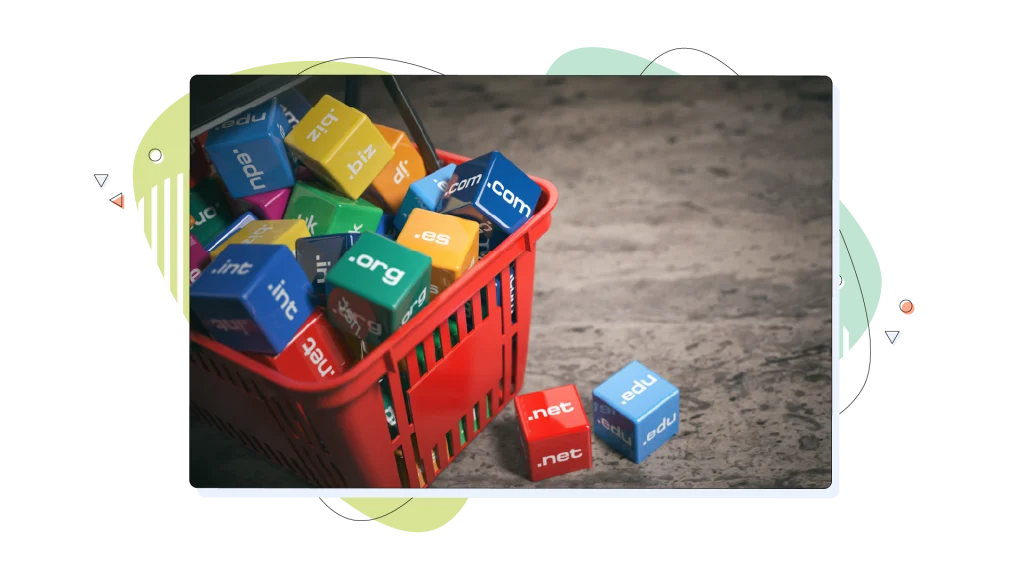
Conclusion
Your domain name represents the digital foundation of your online presence—your online address that plays a major role in establishing your brand’s presence on the internet. This decision is worth careful consideration despite its relatively modest cost in the grand scheme of business expenses.
Remember these key takeaways:
- The choice of TLD significantly impacts both price and perception, with .com domains commanding premium prices due to their universal recognition.
- Registrar selection matters—look beyond introductory pricing to understand renewal rates and included features.
- Domain length, keyword inclusion, and brandability all contribute to a domain’s value and effectiveness.
- Multi-year domain registration offers savings and protects your digital asset from accidental expiration.
- The perfect domain balances memorability, relevance, and availability while supporting your long-term brand strategy.
Whatever your online ambitions, partnering with a reputable registrar ensures your domain journey starts smoothly. HostPapa stands out by offering transparent pricing, comprehensive domain management tools, and expert support to guide you through the process. Start your website with HostPapa.
Ready to claim your corner of the internet? Visit HostPapa’s Domains page today to explore options across hundreds of TLDs, search availability, and secure the perfect name for your next venture.
FREQUENTLY ASKED QUESTIONS
How much does a domain name typically cost?
Most standard domain names with common TLDs like .com, .net, or .org typically cost between $10-20 per year. However, prices can vary based on the registrar, TLD popularity, domain length, and whether it contains premium keywords.
While the same domain name might cost as little as $1-3 annually, other variations with different extensions, etc., will boost the cost to millions of dollars.
Do I really need domain insurance or similar add-ons?
Most domain “insurance” or similar products are unnecessary upsells. The best protection for your domain is simply keeping your contact information up to date, enabling auto-renewal, and using a reputable registrar with good security practices. If your domain is critical to your business, consider using a domain monitoring service instead, which alerts you to any unauthorized changes.
How do I know if a domain name is worth what the seller is asking?
Domain appraisal is part science, part art. Consider factors like length, memorability, keyword value, and comparable sales.
Tools like Estibot domain appraisal can provide automated valuations, but these are just starting points.
For expensive domains ($1,000+), consider getting a professional appraisal or using a domain broker who understands market values. Never rush into expensive domain purchases—take time to evaluate alternatives and negotiate.
